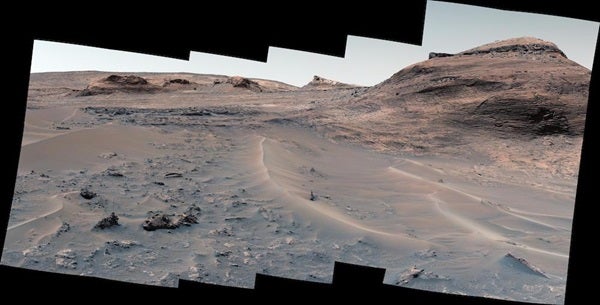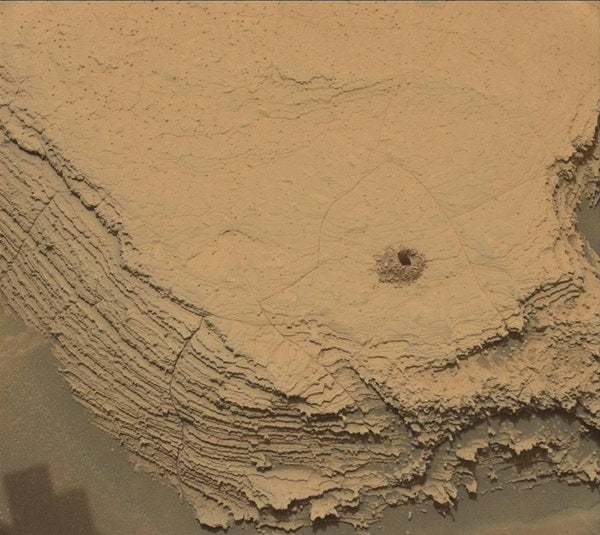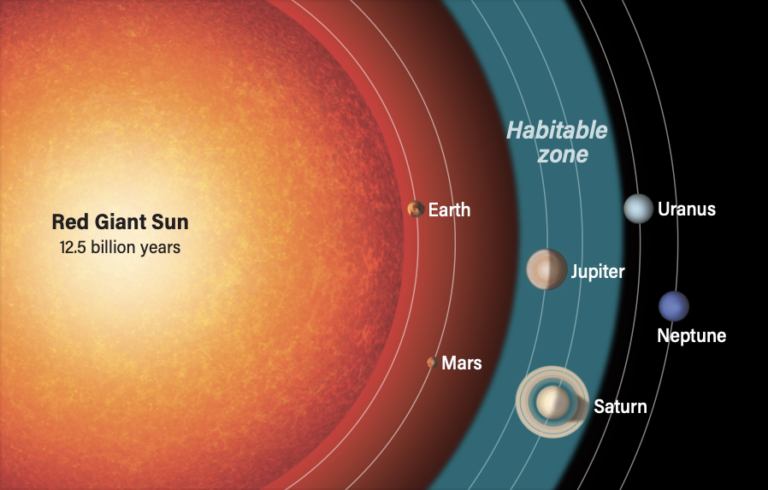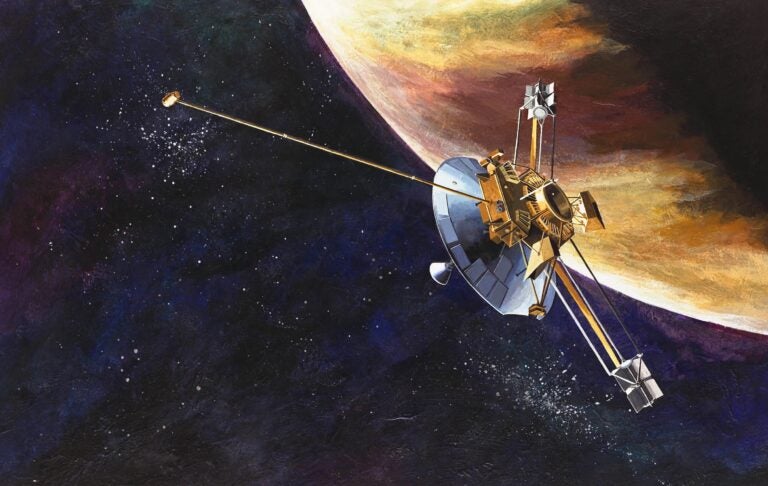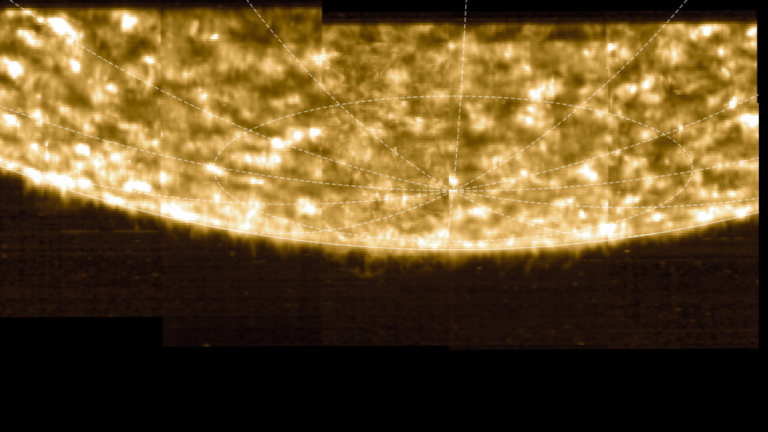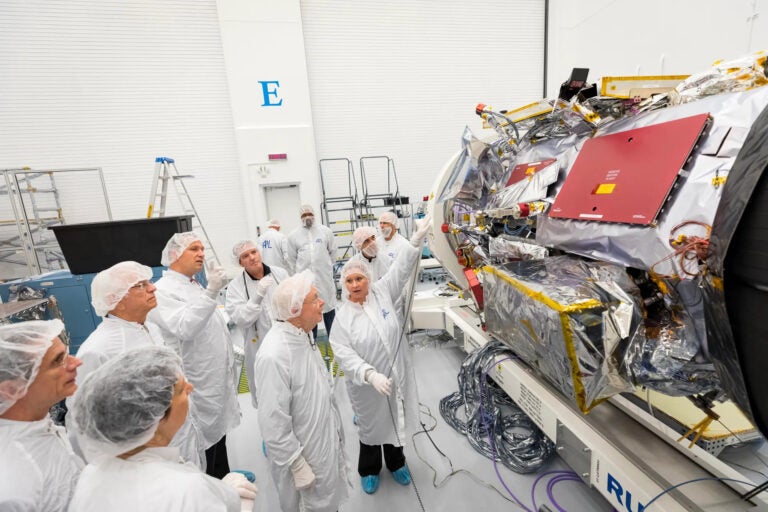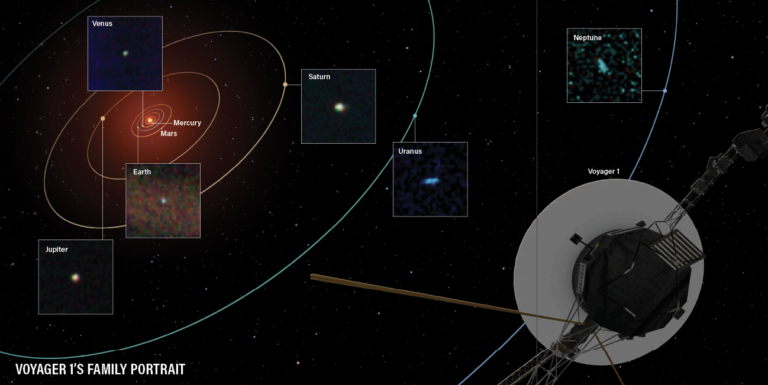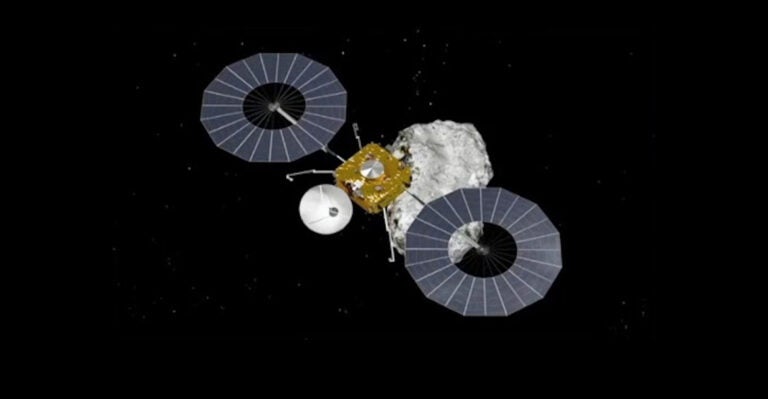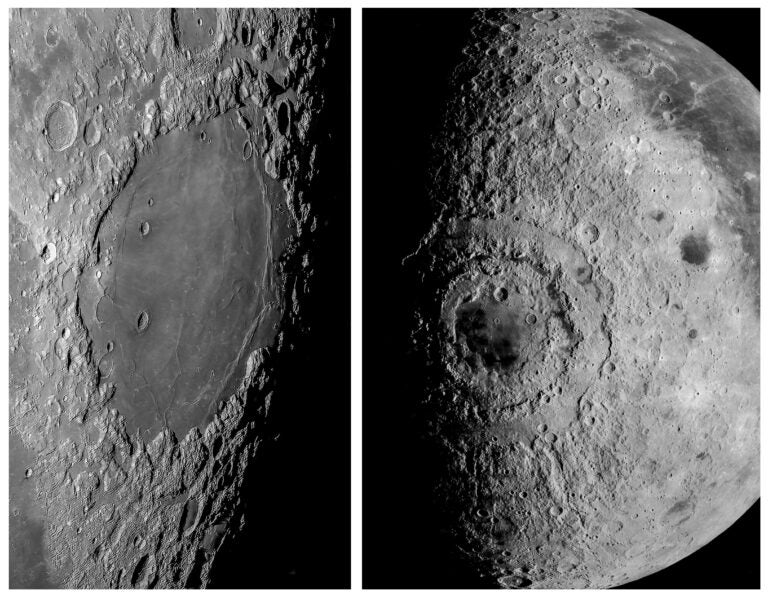Mars is a desert wasteland. But billions of years ago, water flowed across the Red Planet in streams and rivers, pooling into ponds and lakes. An ocean larger than Earth’s Arctic Ocean may have even dominated Mars’ northern hemisphere.
At some point, however, the water dried up, leaving behind the desiccated world we know today.
NASA’s Curiosity rover is now on the hunt for the minerals left behind during that drying period on Mars, as they might offer clues as to precisely how and why the martian climate changed so drastically. And recently, Curiosity finally arrived at a promising region of Mars’ Mount Sharp that is enriched with the salty minerals it seeks.
Journey through the Paraitepuy Pass
This mineral-rich region of Mars was originally spotted by NASA’s Mars Reconnaissance Orbiter, long before Curiosity even landed on the Red Planet. And with Curiosity recently celebrating its 10th year on Mars, scientists eager to explore this intriguing area have endured a long wait.
But patience won out when Curiosity began its lengthy trek to the sulfate-enriched area. It wasn’t easy going, however, as the rover had to make it through treacherous terrain, including Paraitepuy Pass.
The martian canyon known as Paraitepuy Pass is filled with sand ripples called aeolian bedforms. Just as sharp rocks pose a danger to Curiosity’s wheels, so too do these sand formations, as the rover could lose traction and become stuck. The pass also snakes between hills that blocked Curiosity’s view of the sky, making it more difficult for the rover to orient itself.
High risk, high reward
Despite these hurdles, Curiosity braved the journey through Paraitepuy Pass. And along the way, the rover snapped what the team views as some of the most inspiring images captured during the mission so far.
“We would get new images every morning and just be in awe,” Elena Amador-French of JPL, Curiosity’s science operations coordinator, said in a NASA press release. “The sand ridges were gorgeous. You see perfect little rover tracks on them. And the cliffs were beautiful — we got really close to the walls.”
Still, the Curiosity rover isn’t completely out of the woods yet. This new region poses its own risk, namely rocky terrain. These rocks make it more difficult for Curiosity to find stable ground for all six of its wheels. And out of an abundance of caution, the team is keeping Curiosity’s arm stowed (preventing sample collection) unless the rover’s wheels are secure.
The rover’s methodical trek hasn’t slowed the Curiosity team down much, though. Already, the rover has discovered a range of different rock types, as well as evidence of past water, including popcorn-like nodules and salty minerals. And Curiosity has even taken its 36th drill sample, this one from a rock nicknamed “Canaima.”
“The more and more interesting the science results get,” said Amador-French, “the more obstacles Mars seems to throw at us.” But Curiosity has risen to the challenge time and time again over its 10 years on the planet, and both the rover and its team are eager to take on this next adventure.”

